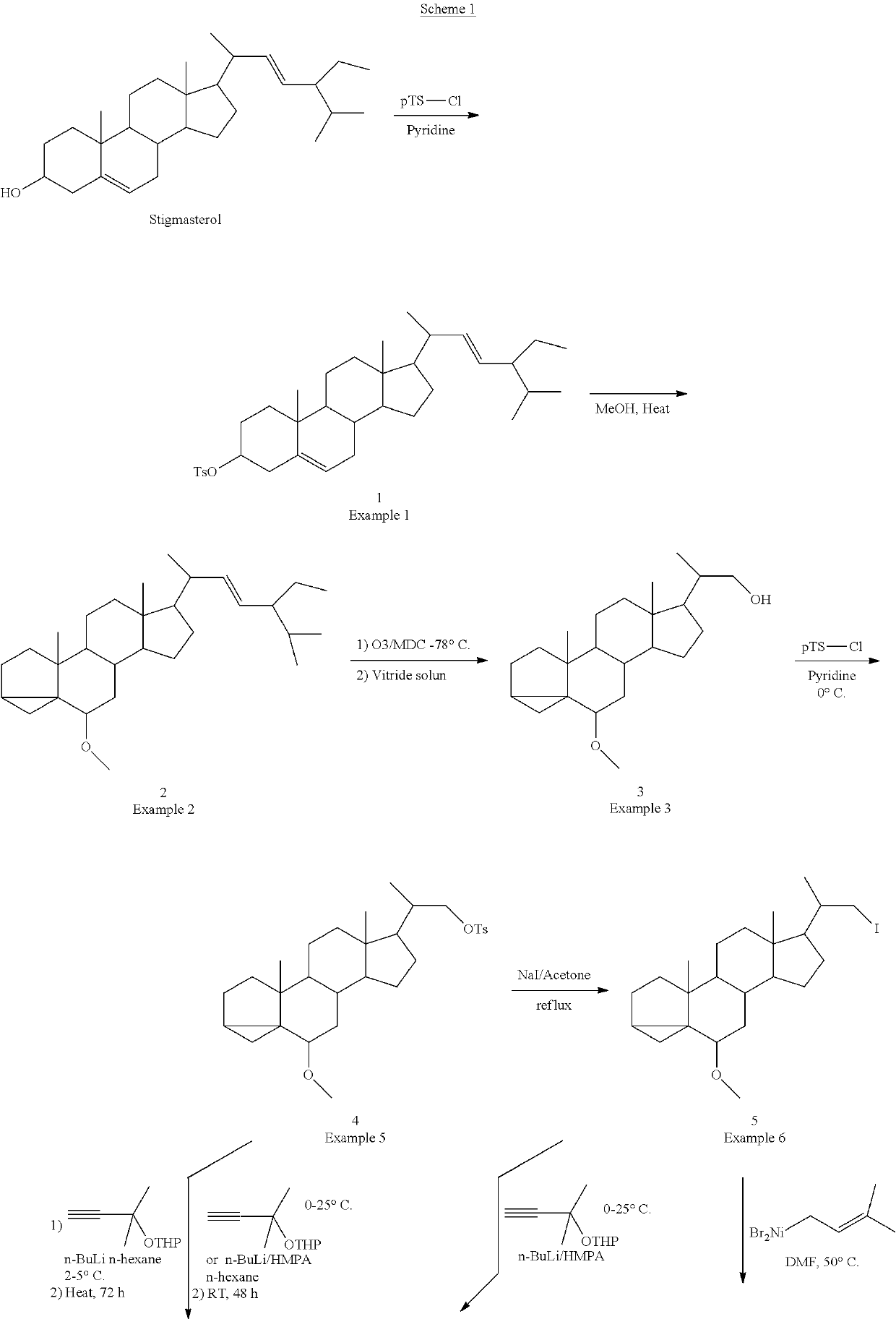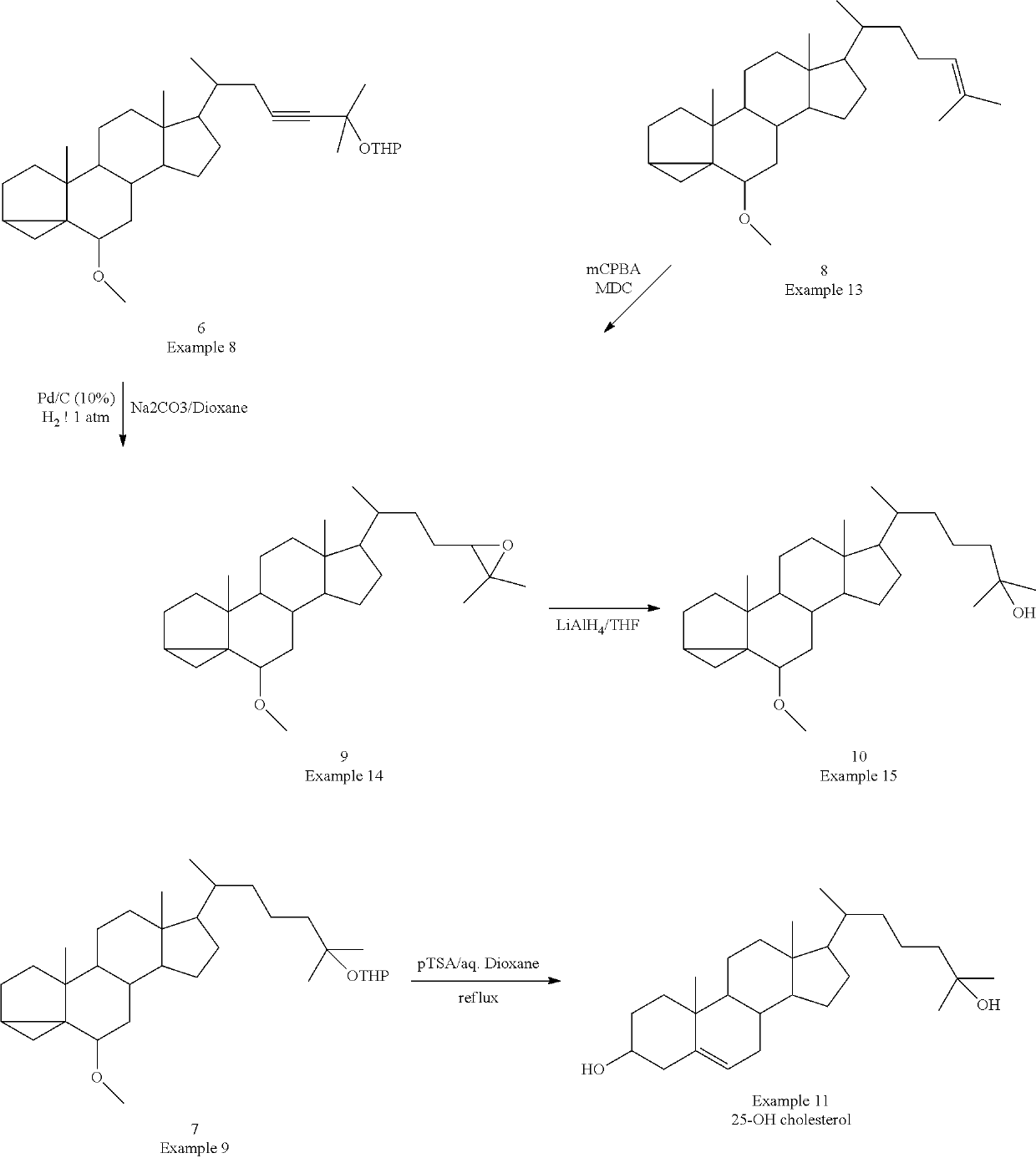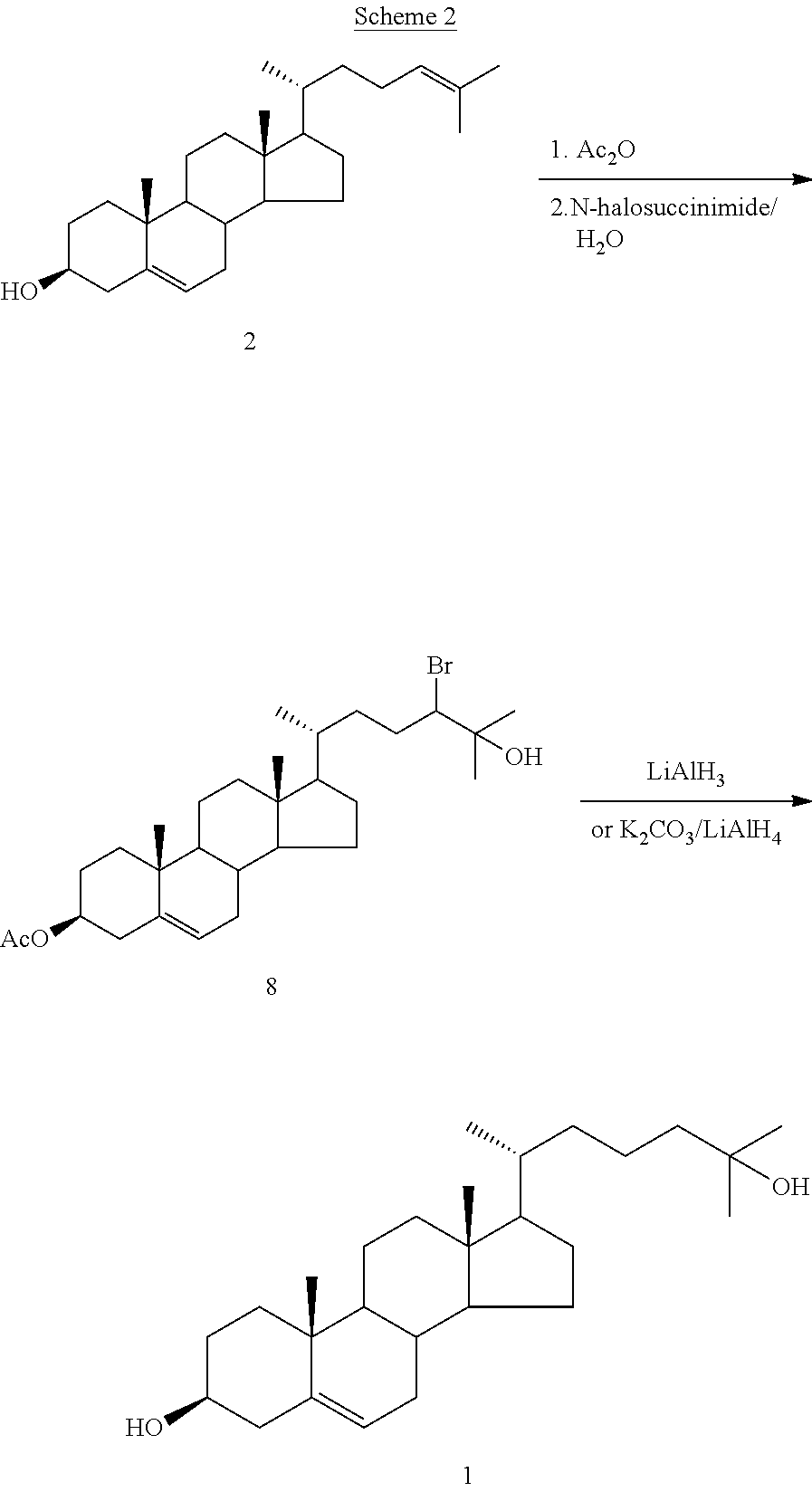Novel method for synthesizing 25-oh cholesterol/calcifediol from phytosterol
a technology of phytosterol and calcifediol, which is applied in the field of new methods for synthesizing 25-hydroxycholesterol/calcifediol from phytosterol, can solve the problems of limited literature available on methods of preparation of 25-hydroxycholesterol and its esters, and the separation of pure stigmasterol from phytosterol is relatively laborious and cumbersom
- Summary
- Abstract
- Description
- Claims
- Application Information
AI Technical Summary
Benefits of technology
Problems solved by technology
Method used
Image
Examples
example 1
[0100]Preparation of Phytosterol Tosylate (1)
[0101]To a solution of 500.0 g (1.20 mole) of Phytosterol in 5000 ml of dry pyridine was added 500.0 g (2.62 mole) of p-toluene sulfonyl chloride and the mixture was stirred at 25° C. for 16 hrs. Pyridine was removed by vacuum distillation and the residue was slowly poured into 10% sodium carbonate solution. The precipitated product was collected by filtration, washed with water followed by methanol and dried in vacuum overnight to yield 600.0 g. of phytosteryl tosylate used for next step without further purification.
[0102]Yield: 600 g (88%)
[0103]Appearance: White solid
[0104]GC analysis: Stigmasteryl tosylate: 20.37% (RT: 6.10)[0105]Sitosteryl tosylate: 42.29% (RT: 6.80)[0106]Campesteryl tosylate: 15.60% (RT: 5.76)
example 2
[0107]Preparation of Phytosterol-1-Methyl Ether (2)
[0108]A mixture of 600.0 g (1.06 mole) of phytostery tosylate in 5500 ml of methanol and 300 g (3.79 mole) of pyridine was stirred at 55° C. for 5 hrs. The cooled solution was concentrated under reduced pressure. The residue was poured into water and extracted with dichloromethane. The dichloromethane solution was dried over anhydrous sodium sulfate and evaporated to dryness to yield 420.0 g. of colorless thick oil used for next step without further purification.
[0109]Yield: 420 g (93%)
[0110]Appearance: colorless thick oil
[0111]GC analysis: Stigmasteryl-1-methyl ether: 19.49% (RT: 5.47)[0112]Sitosteryl-1-methyl ether: 48% (RT 6.05)[0113]Campesteryl-1-methylether: 15.08% (RT: 6.34)
example 3
[0114]Preparation of (20S)-20-hydroxymethyl-6β-methoxy-3α,5-cyclo-5α-Pregnane (3)
[0115]A solution of 420.0 g (0.98 mole) of phytosteryl-1-methyl ether in 4000 ml of methylene chloride and 1300 ml of methanol was cooled to −78° C. and treated with ozonized oxygen for 3-4 h. The reaction vessel was flushed with nitrogen and 42 g (1.11 mole) of sodium borohydride was added. The mixture was stirred at −50° C. for 1 h and then allowed to warm to 0° C. over a 1 h period. Water was added slowly to decompose the excess hydride and the product was extracted with methylene chloride. The methylene chloride solution was washed with brine solution. The methylene chloride solution was then dried over anhydrous sodium sulfate and evaporated to dryness. The 400 g of crude reaction mass was purified by column chromatography using silica gel to get 60.0 g. of (20S)-20-hydroxy methyl-60-methoxy-3α,5-cyclo-5α-pregnane.
[0116]Yield: 60 g (90%)
[0117]Appearance: colorless solid
[0118]GC analysis: 93.6% puri...
PUM
| Property | Measurement | Unit |
|---|---|---|
| temperature | aaaaa | aaaaa |
| temperature | aaaaa | aaaaa |
| mass | aaaaa | aaaaa |
Abstract
Description
Claims
Application Information
 Login to View More
Login to View More - R&D
- Intellectual Property
- Life Sciences
- Materials
- Tech Scout
- Unparalleled Data Quality
- Higher Quality Content
- 60% Fewer Hallucinations
Browse by: Latest US Patents, China's latest patents, Technical Efficacy Thesaurus, Application Domain, Technology Topic, Popular Technical Reports.
© 2025 PatSnap. All rights reserved.Legal|Privacy policy|Modern Slavery Act Transparency Statement|Sitemap|About US| Contact US: help@patsnap.com



